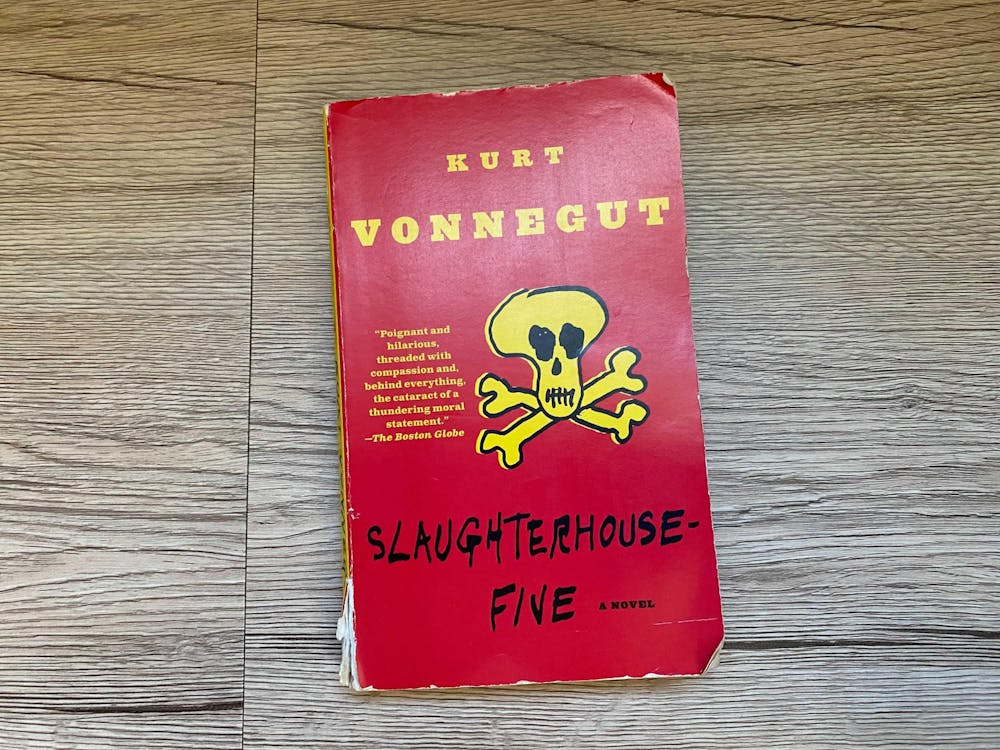Banned Books Week, which celebrates the freedom to read, kicks off today. As a student journalist and nonstop reader, accessible information is my soapbox, so in celebration, I’ll be reviewing some of my favorite works frequently on banned books lists this week.
“Slaughterhouse-Five” by Kurt Vonnegut
Since I first learned to read, my bedroom has housed haphazard stacks of books. Each stack is organized by category and the biggest is composed of books deemed so important that I reread them at least once a year. Kurt Vonnegut’s “Slaughterhouse-Five” tops that stack.
“Slaughterhouse-Five” is a darkly comic anti-war book showcasing Vonnegut’s straightforward Midwestern voice and black humor in the telling of the story of Billy Pilgrim, who has become unstuck in time.
Pilgrim may travel to any point in his life without advance notice. One moment, Pilgrim might be walking his daughter down the aisle at her wedding; the next, he may be a small child sitting in school. Our protagonist exists in a relentless state of stage fright, so Vonnegut writes in the second chapter, “because he never knows what part of his life he is going to have to act in next.”
The novel follows a nonlinear structure and blends Vonnegut’s experiences being firebombed in Dresden, Germany, during World War II with fictionalized characters and plot devices examining the human condition.
Vonnegut is my favorite kind of writer because he so easily slides between profound insight and slapstick. He is poignant, revelatory, brilliant and shockingly real, with the mind of a genius and the humor of a 12-year-old boy. What a juxtaposition.
Banned for sexual content, profanity and violence, “Slaughterhouse-Five” seems coldly cynical on the first read. It echoes “So it goes” when characters die and houses some of my favorite lines in all of literature: “Have you ever seen bugs trapped in amber? … Well, here we are, Mr. Pilgrim, trapped in the amber of this moment. There is no why.”
It was only on my fifth or sixth read of the book that I understood that it is indeed decidedly optimistic. Vonnegut’s Tralfamadorians — creatures from another planet who interact with Pilgrim intermittently throughout the novel and who explained his unstuck-ness to him — see time all at once: as if past, present and future moments occur concurrently, a straight line drawn through each category. It’s an encouraging, if disconcerting, idea: Moments never actually end, they simply build on one another.
“Slaughterhouse” contains an elevated commentary on the construct of time. It also delivers much of its sentences in five words or fewer. Vonnegut doesn’t pen complex sentences with lots of clauses and words needing dictionaries to decipher; he writes like a boy from Indianapolis. He writes that way because he is a boy from Indianapolis, as he commented in his collection, “Palm Sunday.”
Billy Pilgrim is not Vonnegut’s self-insert. But you do learn a lot about the author through “Slaughterhouse” anyway.
The book reads like it took all Vonnegut had. It is so short and jumbled, he informally writes in the first chapter addressing his publisher, Sam, because there is nothing much intelligent to say about war. I cannot think of a thesis more worthy of study or one more dangerous to ban.






